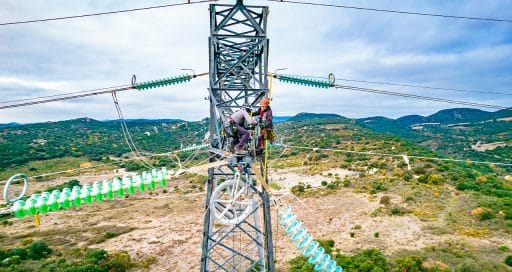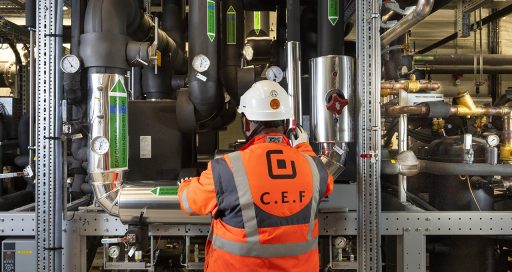Smart grid demonstrator set up to accelerate the energy transition
Reading time: 5 min
The ESTP Paris engineering school has developed a demonstrator that is open to manufacturers who are keen to test infrastructure and equipment projects in the field of smart grids. This energy transition-based initiative, carried out in partnership with VINCI Energies, promotes cooperation between public and private players.

The smart grid demonstrator designed by ESTP Paris and VINCI Energies is the only one to integrate industrial machinery.
On 29 September 2022, the ESTP Paris (Ecole spéciale des travaux publics, du bâtiment et de l’industrie) engineering school inaugurated on its Cachan campus (in the Val-de-Marne department in Greater Paris) a rather unique smart grid demonstrator in partnership with VINCI Energies, and in particular three of its business units: Actemium Vitry, VINCI Facilities TEM and Citeos Solutions Digitales.
“We are the only educational establishment to have designed and hosted a full demonstrator, incorporating all the key components of a smart grid as well as industrial equipment,” says Bilal Amghar, head of the electricity laboratory at ESTP.
Intended to meet training, R&D and innovation needs relating to smart grids, the demonstrator provides a testing and validation environment accessible to all manufacturers wishing to trial infrastructure and equipment projects that centre around the energy transition.
The aim of the ESTP Paris Foundation, which is funding the scheme, is to attract not only manufacturers, as mentioned, but also schools and universities, businesses, start-ups and regional authorities to the Cachan campus.
“ESTP’s proposition is unique in that it is fully in keeping with a comprehensive approach to innovation, which extends – in an agnostic way – to all organisations working to accelerate the energy transition,” notes Juliette Gaborit, project manager at Citeos Solutions Digitales.
How algorithmic modelling supports energy efficiency
In the drive for energy efficiency, smart grids are seen as a focal point. Based on digital technology, data analytics and algorithmic modelling, these distribution, consumption and storage grids make it possible to adjust energy flows in real time to the specific needs of a given block, neighbourhood or area, integrating renewable energy sources into the process as much as possible.
“An innovation approach which extends – in an agnostic way – to all organisations working to accelerate the energy transition.”
In short, smart grids help to cut energy use, shift systems towards cleaner sources and drive self-consumption where applicable.
But the rollout of these smart loops is dependent for the time being on progress in research and, to an even greater extent, cooperation between public and private players. That’s where demonstrators come into play. They can be used to test smart energy solutions for buildings and neighbourhoods, to trial connections to a local or regional grid with integrated renewable energy facilities, and to test and validate new equipment and services.
A hypervisor platform with an educational focus
To achieve this goal, the Cachan demonstrator comprises a 10kW UPS system (generation), 100kWh batteries (storage), a 14kW charge point for electric vehicles (mobility) and a smart variable-load emulator of up to 50kW (consumption).
Test configuration, scenario transmission, control, visualisation and analysis of energy consumption data are handled by a hypervisor platform designed by Citeos Solutions Digitales, the business unit responsible for the development of digital solutions for local and regional authorities.
“We had to design a platform capable of configuring tests and of being used as a teaching tool since the demonstrator forms part of the curriculum at ESTP, which wants to raise awareness among tomorrow’s engineers about energy transition issues and the role of alternative and renewable energy sources, especially in the construction sector,” highlights Juliette Gaborit from Citeos.
Scalable, the scheme is shortly due to be supplemented by a roof-mounted solar installation. Its power output is also set to be scaled up as future connections are made and new sources of energy are integrated. The project required the installation of a slab strong enough to support the load and ensure a properly sized power supply.
“We’ve already planned to add two charge points, in partnership with Citeos. In the short term, the network should also include hydrogen fuel cells. We want there to be an open approach to the demonstrator; we are not ruling out any future development,” explains Bilal Amghar from ESTP.
21/04/2023





